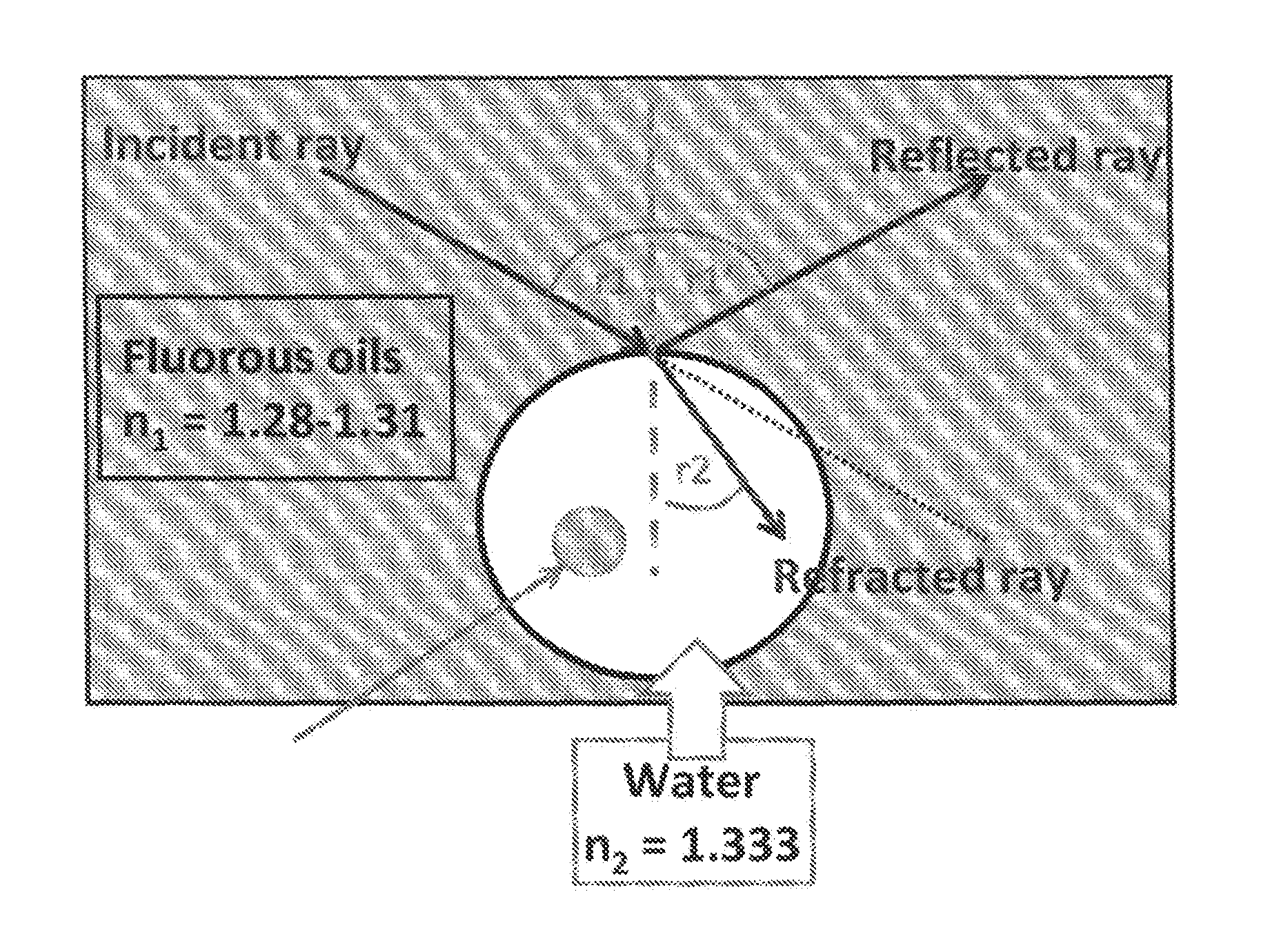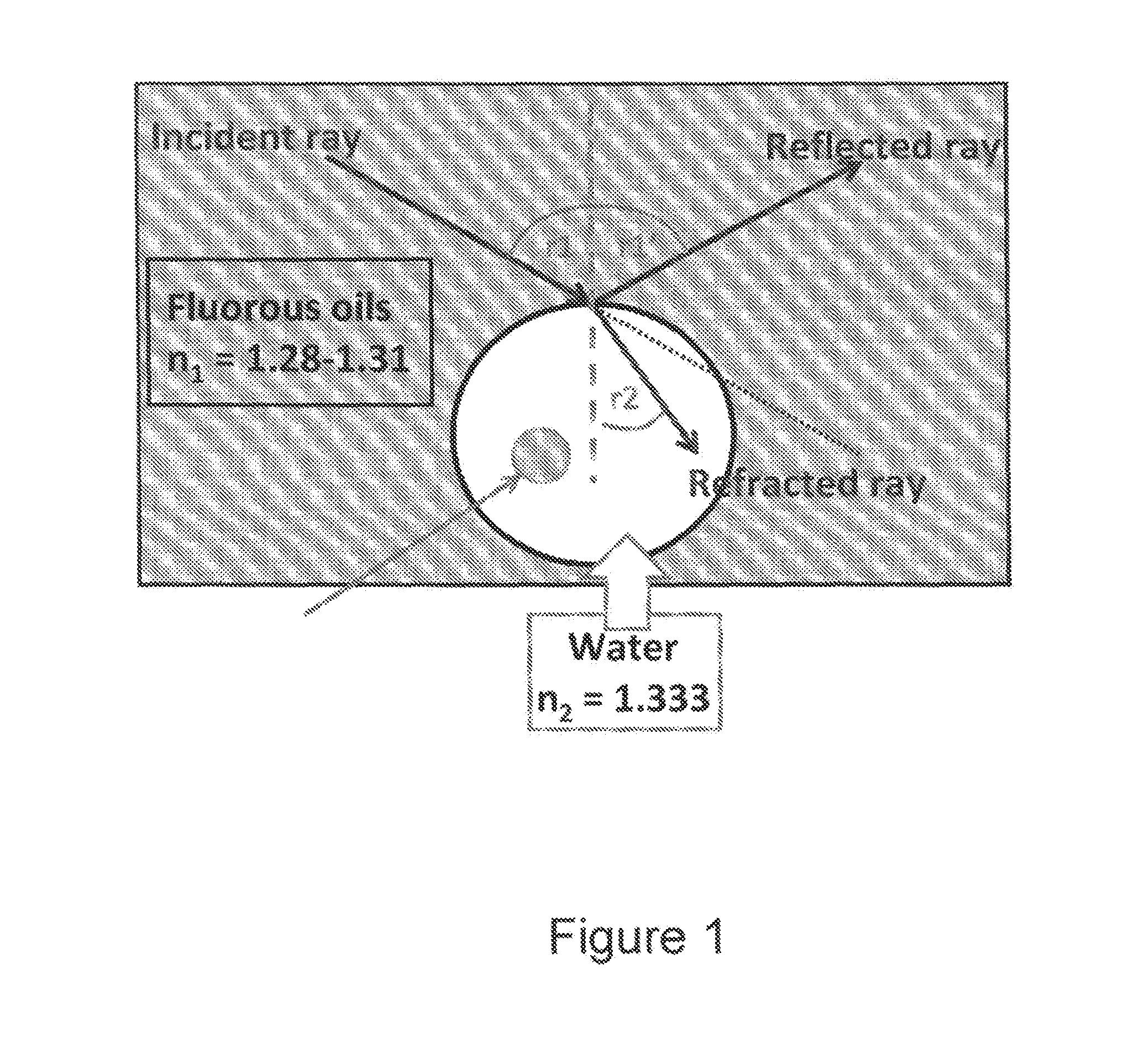Emulsion
a technology of emulsion and emulsion, applied in the field of emulsion, can solve the problems of general limitation of microdroplet-based cell processing
- Summary
- Abstract
- Description
- Claims
- Application Information
AI Technical Summary
Benefits of technology
Problems solved by technology
Method used
Image
Examples
example 1
[0165]Proof of concept experiments have been performed to generate and test clear and nearly clear emulsions by refractive index matching of the continuous phase (Pico-Surf™ 1 in Novec-7500, containing various proportions of refractive index modifying compounds with refractive indices higher than water) with the aqueous phase (DMEM-culture medium containing 10% Ficoll, which has an unknown refractive index). The chosen refractive index modifying compounds were all liquids. As there is only a low percentage of fluorous surfactant in the fluorous oil, we assume this will have a negligible effect on the refractive index of the pure fluorous oil.
[0166]An equation for the theoretical design of a clear emulsion is described by Sun et al (Refractive index matching and clear emulsions. Sun, J. Z., Erickson, C. E. and Parr, J. W. J. Cosmet. Sci., 56, 253-265, 2005).
Clear emulsion occurs when, RIoil=RIwater
Refractive Index of the oil=RIoil=[ΣWi×ni] / [ΣWi]
Wi=weight of each component, ni=refrac...
example 2
[0171]An experiment to match the following aqueous solution was conducted in a droplet generator:
D2O—RI 1.3284;
H2O—RI 1.333;
Dulbecco's phosphate bufferered saline;
10% Ficoll in DMEM; and
LB bacterial growth medium.
[0172]The oil comprised of perfluorophenanthrene (PFP), 2% Pico-Surf™ 1 and various amounts of the refractive index modifying compound, 1, 3-bis-trifluoromethyl-5-bromobenzene. From left to right in the image of FIG. 10, the percentage 1, 3-bis-trifluoromethyl-5-bromobenzene was: 0%, 2.58%, 7.43%, 7.66%, 8.06% and 8.94%.
[0173]Applications of the above-described techniques include, but are limited to, improved label-free cell sorting, and pre-sorting of empty microdroplets from microdroplets containing cells or particles; embodiments of the techniques can also be employed in flow cytometers, cell counters, imaging and microscopy. Embodiments of the techniques can still further be employed to provide signal enhancement of the fluorescence signal of both homogeneous and non-ho...
PUM
| Property | Measurement | Unit |
|---|---|---|
| refractive index | aaaaa | aaaaa |
| refractive index | aaaaa | aaaaa |
| refractive index | aaaaa | aaaaa |
Abstract
Description
Claims
Application Information
 Login to view more
Login to view more - R&D Engineer
- R&D Manager
- IP Professional
- Industry Leading Data Capabilities
- Powerful AI technology
- Patent DNA Extraction
Browse by: Latest US Patents, China's latest patents, Technical Efficacy Thesaurus, Application Domain, Technology Topic.
© 2024 PatSnap. All rights reserved.Legal|Privacy policy|Modern Slavery Act Transparency Statement|Sitemap



